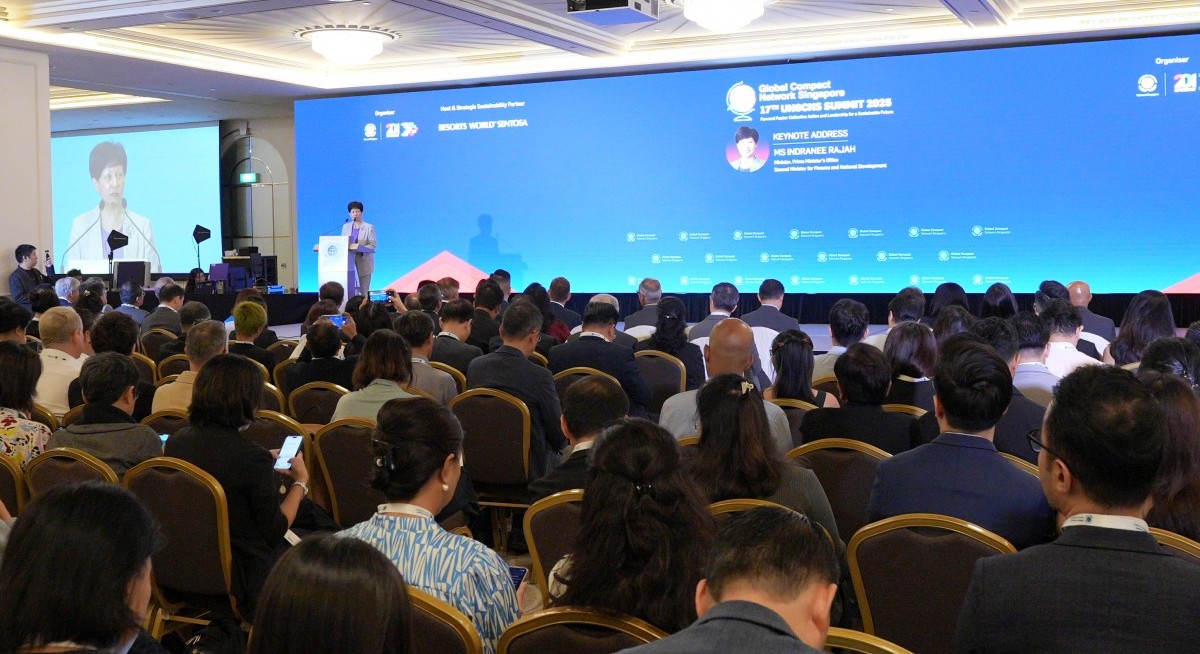By end-2025, SEFR will also recommend suitable international emission factors for common business activities, such as air travel, where local data is not yet available.
Firms commonly use emissions factors — or a reference list of activities and the pre-determined amount of emissions generated — to estimate their greenhouse gas emissions.
SEFR aims to aggregate emissions factors into a single source and expand the suite of emissions factors for use by Singapore businesses.
Co-developed by the Singapore Business Federation (SBF) and A*Star, SEFR was launched in October 2024 with over 200 emissions factors over eight categories — building equipment, building materials, fuel, greenhouse gases, land transport, purchased energy, waste and water — calculated with Singapore’s context in mind.
See also: With no net-zero target, Far East Orchard focuses on cutting Scope 1, 2 emissions
With SEFR, local firms can pivot from using overseas emissions factors registries, such as the US Environmental Protection Agency (EPA) and UK Department for Environment, Food and Rural Affairs (DEFRA), for their sustainability and carbon emissions reporting.
At its launch, SEFR was touted as the “single source of truth” for Singapore’s emissions factors by SBF CEO Kok Ping Soon.
New factors
See also: Deadly storms, US$3 bil in losses test Vietnam’s climate defences
To develop three new emission factors for the cleaning, security and professional service sectors, A*Star developed a methodology that adapts international carbon accounting methods to Singapore’s context using a “ground-up life cycle assessment (LCA) approach”.
SEFR collected data from local businesses to understand their operations and calculate market-average emissions. According to SEFR, this will help generate “more representative and comparable” Scope 3 reporting across Singapore’s business community.
These new emission factors data will be published by end-2025.
Generally, Scope 1 refers to direct emissions occurring from sources that are owned or controlled by the company and Scope 2 refers to indirect emissions from the generation of purchased electricity, steam, heat or cooling that the company consumes.
Firms typically find it most challenging to account for Scope 3 emissions, which arise from a company’s upstream and downstream value chain. In total, there are 15 categories within Scope 3, and most companies have only begun reporting on Category 6 — emissions arising from business travel.
SEFR will unveil more improvements next year. For the ICT sector, the Infocomm Media Development Authority (IMDA) is working with partners to drive energy efficiency and reduce greenhouse gas emissions from digital infrastructures, especially data centres.
IMDA, together with the National University of Singapore’s Energy Studies Institute (NUS-ESI), has analysed the drivers for emissions by cloud services and data centres, aiming to standardise emissions calculations.
To stay ahead of Singapore and the region’s corporate and economic trends, click here for Latest Section
According to SEFR, more details on this initiative will be released in early 2026.
Separately, SBF and the World Business Council for Sustainable Development (WBCSD) signed a memorandum of understanding in May to enable any company to list high-quality product carbon footprint (PCF) data of its goods and services in conformance with the globally recognised Partnership for Carbon Transparency (PACT) methodology.
The listing of PCF data through SEFR will allow procurers to access trusted data for more convenient and accurate Scope 3 reporting and better-informed decision-making. Suppliers will be able to showcase their products or services’ green credentials. This will go live by early 2026.
Contributing firms
SEFR was launched with voluntary contributions from Singtel and PwC Singapore, with support from the Singapore Green Building Council, the Ministry of Trade and Industry, the Ministry of Sustainability and the Environment, Enterprise Singapore and the SBF Foundation.
To develop new emissions factors, the list of organisations that have contributed to SEFR has grown to more than 34 names, including the Singapore Management University and law firms Allen and Gledhill, Dentons Rodyk & Davidson and WongPartnership.
“SEFR has benefitted more than 700 Singapore businesses in its first year by helping them report all aspects of Scope 1 and 2 emissions, as well as some aspects of Scope 3 emissions, more conveniently and consistently,” says Lee Chuan Seng, chairman of the SEFR Governance Committee. “We are thankful to the companies that have contributed to the SEFR’s development and will continue to expand its reach and impact. With the enhancements, we welcome all businesses, regardless of size or sector, to join this national effort to advance transparent and reliable carbon accounting.”
Read more about climate-related disclosures:
S’pore ‘not at all’ softening commitment to sustainability reporting: Ravi Menon (September)
SGX RegCo’s climate reporting extension ‘very generous’, say experts (September)
Carbon accounting tools Gprnt, SEFR, ESGenome help firms calculate emissions (August)
SBF inks MOU with WBCSD to list product-specific carbon footprint data (May)
Nearly all listcos have begun climate reporting; SGX RegCo still mulling Scope 3 roadmap (March)
SBF launches Singapore Emission Factors Registry as ‘single source of truth’ for localised emissions data (October 2024)
SGX RegCo will require ISSB-aligned climate-related disclosures from all listed issuers starting FY2025 (September 2024)
Large private companies must report annual climate-related disclosures from FY2027: Acra, SGX RegCo (February 2024)




